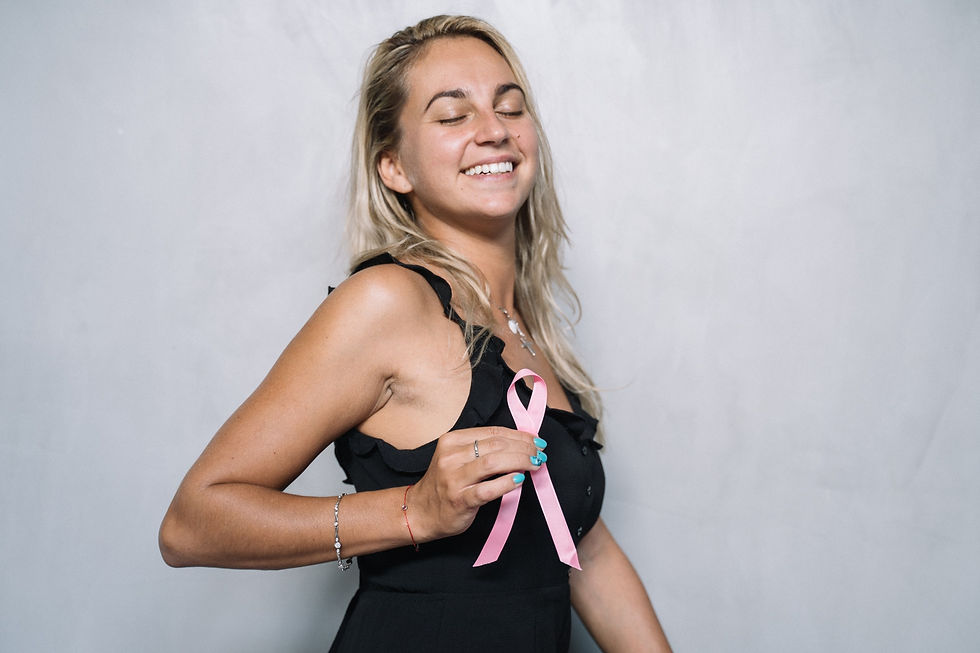Breast Cancer
- Toofoola

- Apr 2, 2022
- 3 min read

"Breast cancer": two words that fill us with sadness. Hearing that one of our neighbors has breast cancer has become all too common. As per WHO, as of the end of 2020, there were 7.8 million women alive who had been diagnosed with breast cancer in the previous five years, making it the world's most common cancer in women around the world.
What exactly is breast cancer?
Breast cancer is a type of cancer that begins in the breast tissues. There are two main types of breast cancer, which can vary in stage from in situ to malignant:
Ductal carcinoma is a type of cancer that begins in the milk ducts and extends to the nipple.
Lobular carcinoma is a type of cancer that begins in the lobules, which are the parts of the body that produce milk.
What are the factors and risks that cause breast cancer?
Approximately half of all breast cancers occur in women who have no identifiable risk factors for breast cancer other than gender and age. Breast cancer risk increases due to a number of factors, including:
Age: As you get older, your risk increases.
Family History: If you have a family history of breast cancer, you may be 20 to 30 percent more likely to develop it.
Heavy, dense breasts can make it difficult to detect a tumor or lump during a mammogram, putting women at greater risk.
History of reproduction: Women who have their period at a young age or menopause after the age of 55 have a higher risk of developing breast cancer because they are exposed to hormones for longer periods of time.
Radiation exposure, particularly in cases where women were subjected to radiation therapy
Women who had children after the age of 30 and women who did not breastfeed are at a higher risk of developing breast cancer.
Hormone use during menopause may increase the risk of breast cancer.
Women who have been diagnosed with a benign tumor.
Overweight
Alcoholic
What are the early signs of breast cancer?
Pain and discharge from the nipples
Breast mass or lump
Skin redness or change, such as orange skin
Swelling of all or part of the breast
Nipple thickening
How to diagnose breast cancer?
When a woman reaches the age of 40, she should have a yearly mammogram.
Each woman should conduct a self-examination once a month.
When a mass is suspected, your doctor may order additional tests such as a breast biopsy, CT scan, MRI, and blood tests.
How to treat breast cancer?
Treatment for breast cancer is determined by the tumor's stage, type, and size. In general, cancer treatment may include the following:
Surgery: total or partial mastectomy
Chemotherapy
Radiotherapy
Hormone replacement therapy
Some treatments can be localized, focusing only on the area around the tumor. Others are systemic, delivering cancer-fighting agents throughout the body.
What is Breast self-examination?
Every woman over the age of 20 should check her breasts at least twice a year. During your bi-annual visit, your doctor will likely check the breasts. He will demonstrate how to examine your breasts at home. If you have any suspicions, you should consult your doctor for further investigation.
The breast self-examination method is as follows:
The best time to perform a breast self-examination is one week after your period begins.
Stand in front of a mirror with your hands on your hips and examine them closely. There should be no mass or discharge from the nipples.
Maintain your hands on your hips and examine your breasts from various angles.
Raise your right hand above your head. Begin examining your breast with the top of your left hand's fingers. Circularly move your fingers with medium pressure, covering the area from your upper hand to your breast. You should be able to feel the different layers of tissues. After you've finished with the breast area, gently squeeze the nipple to check for any discharge.
Repeat the procedure for the other breast.
Contact your doctor if you notice any lumps or masses.
The goal of breast self-examination is to detect cancer as early as possible. It is a simple but crucial test. We strongly encourage all women to take this test. A woman's life would have a better prognosis if cancer was detected in its early stages.




Comments